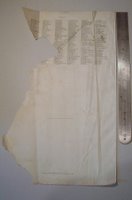Is it Book Art?.... Designer Binding?...... What?
The Victorians took Arts and Crafts to an Art Nouvou
level beyond anything ever seen before...or so though they thought.
click on pictures to
 enlarge
enlarge2 Royal Bindings by Paul Tronson
But these styles are a several centuries earlier and were nothing new then!
One only has to visit the Palace of Alhambra in Granada to see that the Moors were influencing the world with their art a millenia ago, it was only with the invention of the printed word that a few men became eminent in the true Art of Bookbinding and by using a most difficult medium of gold leaf, applied their genius to the craft to inspire us all.... just as they were inspired themselves.























